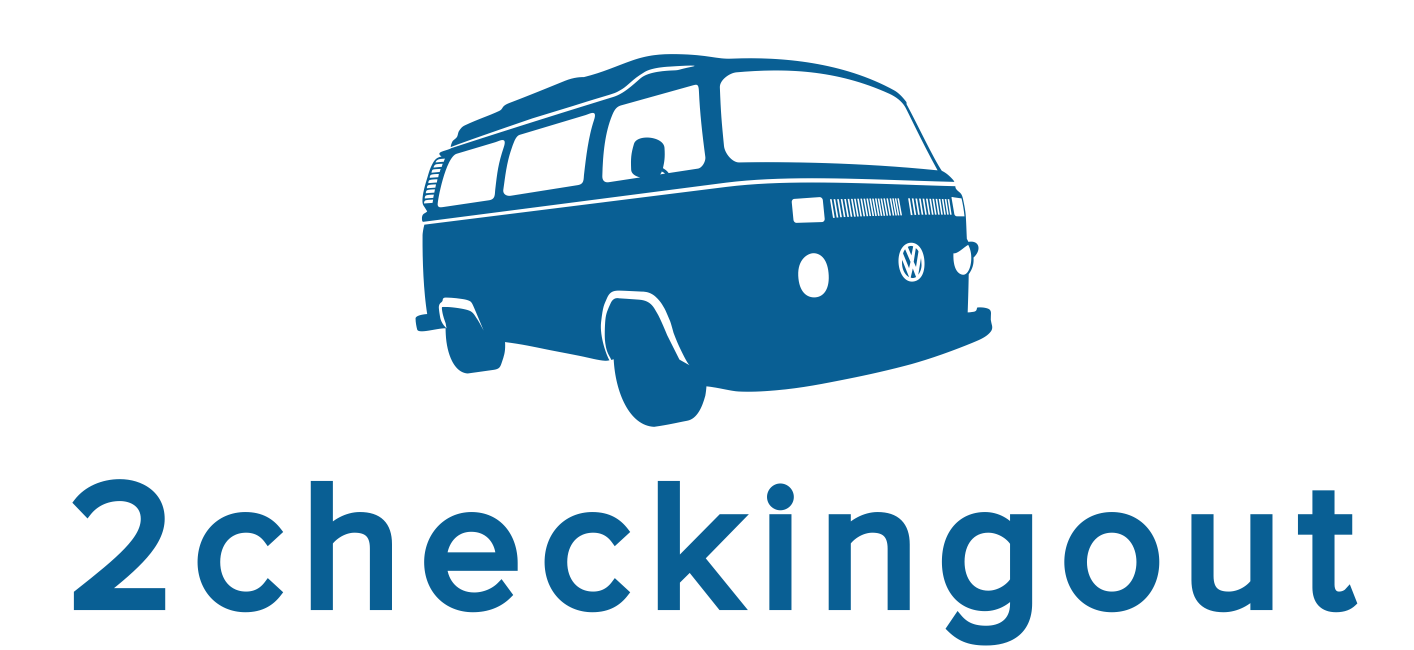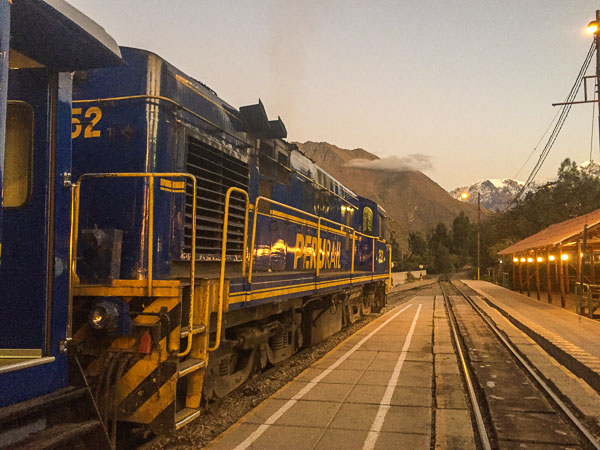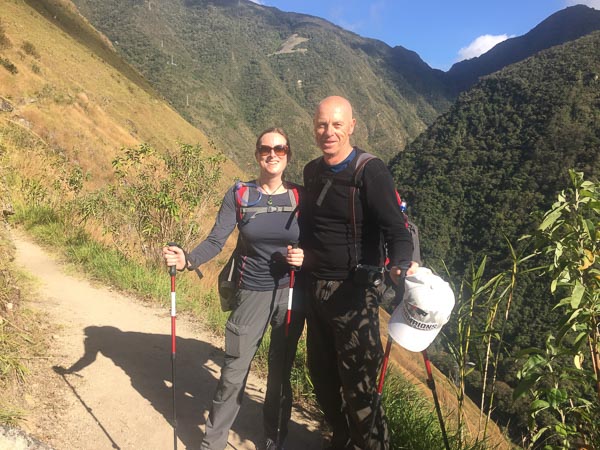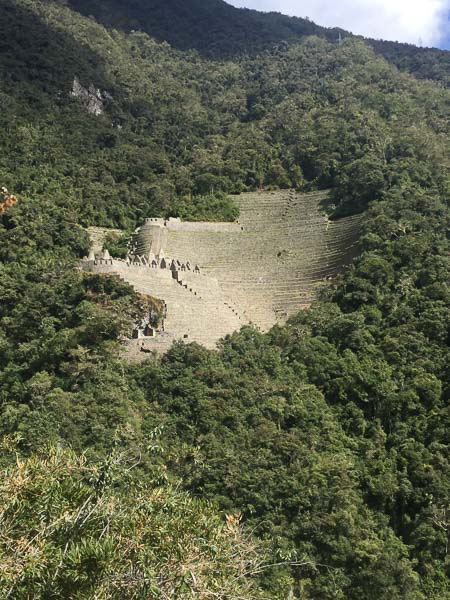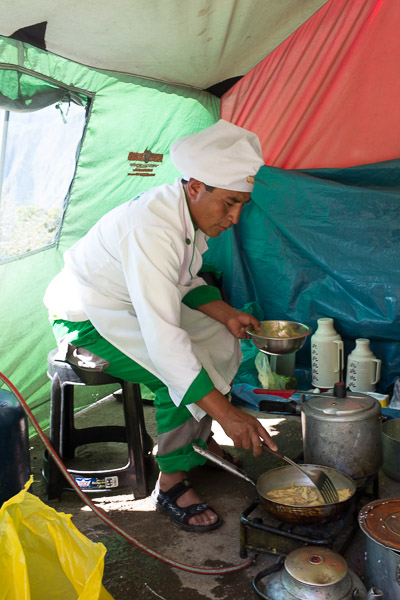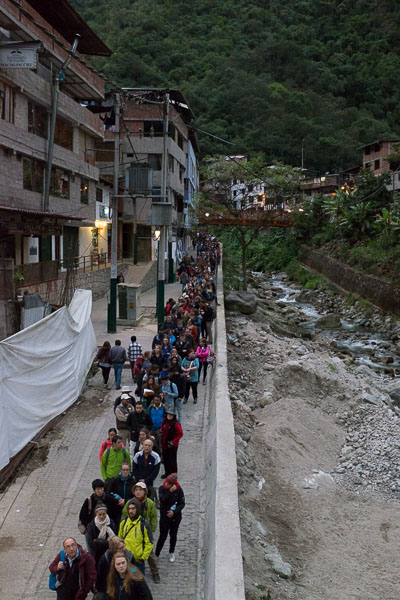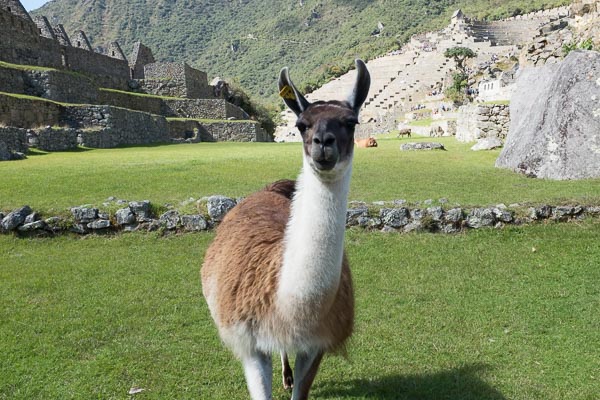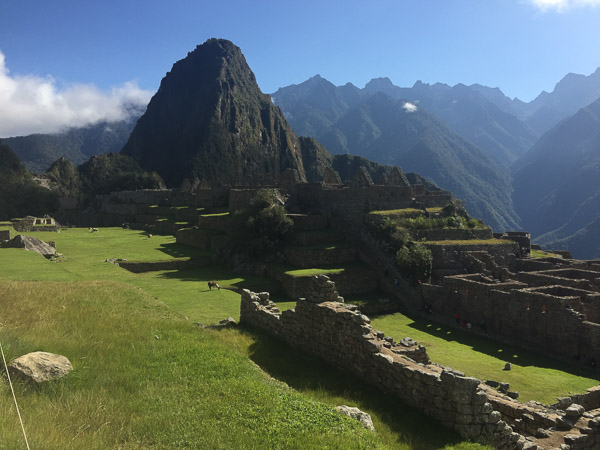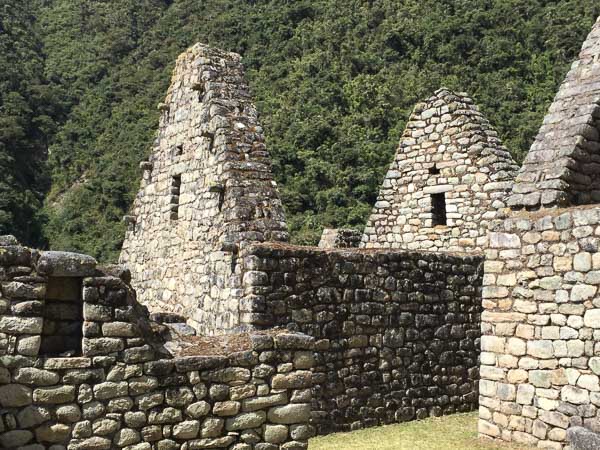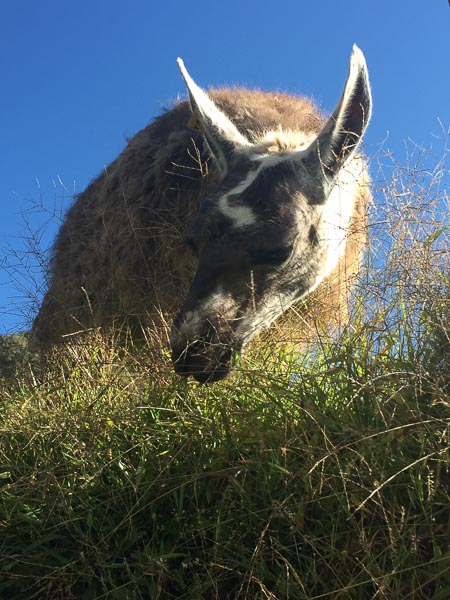Inca Life (Part 2): Machu Picchu from the 104 km Marker
July 2015
Our journey to Machu Picchu started at 4.00 am as we were collected from the hostel and bundled into a minivan still half asleep. We stopped to pick up a few more people before heading out of town to Ollantaytambo for the 6.10 am train. We booked a two-day tour through Alpaca Expeditions who are highly rated on all the usual review sites. There are cheaper options, but these guys tend to get stellar reviews from everybody who has booked them. Muppet here really wanted to do the full 4-day hike but with a knee that has seen more operations than Elizabeth Taylor had marriages, common sense was beaten into me by Julie.
The train carriages are wonderful, very reminiscent of something you would expect to see on the Orient Express. Your seats are pre-booked along with your class of travel. Our carriage had huge ceiling windows that offered a spectacular view of the mountains as we chugged our way through the valley. There was even a hostess service offering free tea, coffee and snacks.
An hour and twenty minutes into the journey, the train came to a shuddering halt at the 104 km marker. Along with our guide, we jumped down the 1-metre drop to the side of the track. We were the only ones on a packed train to disembark here. Reminded me of the old Cary Grant suspense movie, To Catch a Thief. Some may think I'm showing my age; I like to think it's good taste.
Cary Grant on the left....
A short walk to a swing bridge, then a permit checkpoint including a stamp in our passport and we were on the Inca Trail. There are, in fact, many Inca trails; some well-used, others abandoned to nature. Shortly after the checkpoint, we came to our first Inca ruin, Chachabamba. A small site that was once a checkpoint and lookout for the Incas.
Chachabamba checkpoint
We started the trail at an altitude of 2,000 metres or 6,000 feet for the imperial readers. We then hiked for 3 hours along a path that wrapped around the mountain.
Our guide for the two-day trip was Eddy. A nice guy who was incredibly patient and coaxed us along when the going got tough. His constant reminders to drink water kept us hydrated on a warm day. A big bonus was that we were the only people on the tour, out of what could have been a group of twelve people.
Close to midday across the valley, we saw the Inca site, Winay Wayna, which means forever young. An hour later, we were climbing the steps between the terraces of this fantastic ruin. And we had the place to ourselves. Eddy took us to different points throughout the ruins explaining the history and importance of the various buildings.
I guess there are different versions of what the Incas stood for and how they treated the locals of the lands they conquered. The version we had from Eddy was that they allowed the locals to continue to worship the various gods that were important to them as long as the Inca Sun God came first.
They were very much into collaboration and hard work. The one Inca saying that stood out for us is ‘for you today, for me tomorrow’. Interestingly, the Incas did not use prisons; they just made the naughty people work twice as long. The belief is that working twice as long was better than sitting around on their backsides.
Thirty minutes after Winay Wayna we stopped for lunch at the four-day hike camp.
The porters who accompany the hikers had set up a tent/dining room complete with tables and chairs. Lunch was terrific given that we were miles away from anywhere. They even knew Julie was a vegetarian and provided several yummy options. Something the guys from Pantanal Discovery could learn from (still no promised refund!).
The camp was almost deserted, except for the porters and the three of us. Come evening, there would be over 500 hikers parked up on ledges and overhangs.
After lunch, we set out on the final two hours of walking before arriving at the Sun Gate. From the moment we jumped off the train, we couldn’t have seen more than half a dozen other people. So lucky to have this unique trail to ourselves.
A walk with a view
The arrival at Inti Punku (Sun Gate) just blew our minds. Looking down on Machu Picchu for the first time is a moment that will stay with us forever. But who were these people imposing on our moment? Transpires you can walk up from the main complex to the Sun Gate, doh.
During the summer and winter solstices, the sun rises and shines through the Sun Gate down onto specific Sun Temple windows. That would be a special moment to witness. It was amazing to think that the Inca King was carried twice per year to this site to see this marvel. It took the best part of an hour to walk down from the Sun Gate to the main complex. We passed lots of red-faced people walking in the opposite direction.
After having the trail to ourselves, it was quite a shock to be among the selfie stick waving hoards everywhere in the main complex. We had a quick gander at a couple of locations and decided to catch the bus down to Aguas Calientes before the queue got too long. The trip down is quite entertaining; 9 km and 13 hairpin bends with buses meeting at every corner. It was almost one of those close your eyes and hope for the best bus rides.
The town of Aguas Calientes is the gateway to Machu Picchu for everybody who has not hiked in. This small town is where the train terminates. In fact, the train line runs through the centre of town. You can be sat having a beer waving to everybody on the train heading out of town.
Our hotel room was the size of a shoebox but had three big pluses, a hot shower, shampoo and a hairdryer; well, at least one of us could use the hairdryer. We joined Eddy for dinner at an OK restaurant and retired early, pretty bushed.
A very happy bouncy Eddy met us the following morning at 5.45am. The queue for the bus to Machu Picchu already stretched halfway through town. We watched in awe as guys ran wheelbarrows full of cement uphill from the bottom of town to the main centre while we waited. All traffic except for emergency vehicles is banned from the top half of town. Goods and produce have to be wheelbarrowed in.
It took over 45 mins before we managed to set foot on a bus and then another 35 minutes to reach the entrance. We missed the sunrise but still managed to find a few quieter locations without too many people to get in the way of photos.
Eddy was again a mine of Inca history as we weaved through the cemetery, King’s residence, Sun Temple, Temple of the Condor, and various other key sites. The Spanish never found Machu Picchu, so it was left to Hiram Bingham and his team to uplift much of the treasures and whisk them back to Yale University and other private collections.
We said goodbye to Eddy at 9.30am, and by then, the armada of buses had deposited hordes of visitors. There is apparently a limit of 2,500 visitors on top of the hikers per day. It felt more like 25,000 as patience started to wear thin.
Overlooking Machu Picchu is the imposing mountain Huayna Picchu. You know what they say about mad dogs and Englishmen? Yep, we had booked to climb The Stairs of Death in the middle of the midday heat. A separate ticket is required for the climb, with a limit of 400 people per day split into two groups.
The climb is huge, with massive stone steps, narrow walkways, steel ropes to help with the steepest parts and finally, a small cave to crawl through.
Julie had a vision of me being stuck in the short tunnel blocking the way for everybody else. Luckily I have lost a few kilograms since starting our overseas adventure.
You could feel the invisible gloat of the folk on the way down, thanking the Sun God that they had chosen to climb earlier in the day and now had the sun on their backs. Occasionally somebody would say, ‘nearly there’ or ‘it’s just around the corner’ with that wry smile of somebody who had already conquered their own Everest.
At the top, you are rewarded with the most stunning view of Machu Picchu and the surrounding countryside. There is no health and safety at the top as visitors jostle each other for that perfect instagram moment on the edge of a sloped rock where one false move sees you take the express route back to Machu Picchu.
It’s unbelievable that without the aid of modern machinery, the Incas built a lookout complete with a temple and living quarters for those manning this guard post.
And the view is not bad either
The descent down was almost as arduous as the climb. And for us, there was nobody to tease with 'you're almost there'. The quads and glutes were screaming by now. We caught our breath at the bottom in a shady area and made friends with a couple of groovy llamas.
We trudged our way back to the entrance, where the wait for the buses was over 45 minutes. Again in Aquas Calientes, we grabbed a beer and pizza before catching the train back to Ollantaytambo. Despite the stunning scenery that runs alongside the track, there was lots of dozing people glad of the rest-bite after a hard day slogging round this fantastic world heritage site.
We spent our last night in Cusco at a Hostel Pisko & Soul, just opposite our previous home. This one not quite as friendly as El Grial, but hey, it was a bed for a night after a couple of long days.
Cusco is a beautiful city. History drips from every Inca stone and narrow street. The old town is just the right size to wander by foot. You don’t get the feeling that you are in a city of over 300,000. Yep, there is more than fair few tacky tourists shops, but you don’t feel overwhelmed. There is a brilliant indoor market that straddles the border between the new town and the old town.
The accommodation cost is probably the most expensive in South America, but you can find some great food at bargain prices. And of course, there is always happy hour, 2 for 1 pisco sours.
Visiting the Sacred Valley, then the Inca ruins behind the city and finally Machu Picchu was incredible. The fact that the Incas carved these massive stones, hauled them over mountain ranges and fitted them together like Lego without mortar is just mind-blowing. Photos do not do justice to the sheer scale of what those clever Incas achieved.
Next stop, hopping our way to Ecuador.
